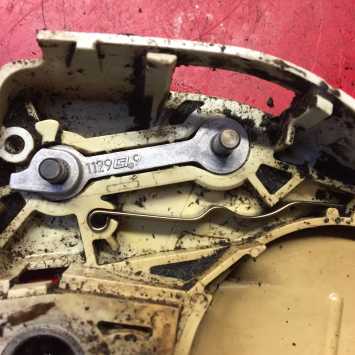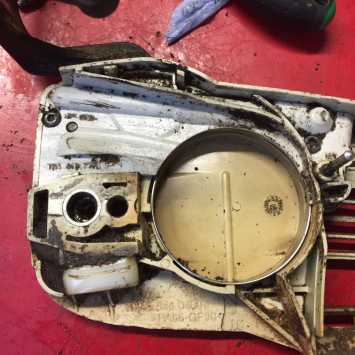Evaluating conditions of arborist equipment is a fundamental part of our training courses. Lack of maintenance, serious malfunctioning or missing safety features is a contributory factor to many accidents.
Machine choice and suitability to the task is pertinent especially when writing about top-handle saws in particular. These are often erroneously referred to as ‘one handed saws’, mainly by my domestic chainsaw trainees who will tell me how handy they are for cutting up firewood.
Professional chainsaw users that have received chainsaw training are generally aware of how this type of machinery should be used by climbing arborists in a safe manner. The one handed use should purely be restricted to situations where there is no other option to achieve a stable work position. The HSE gives a raft of advice on these saws, some of it 15 years old but relevant nevertheless. Some of these links include:
Over the years we’ve found that working older, poorer conditioned machines have proved massively helpful in building knowledge of machine features and deterioration due to neglect or abuse. We’ve often had chainsaws that are beyond repair, which hasn’t been a problem as we have a large hire selection of saws to utilise. This also reinforces the safe practice of setting such machines to one side and using safe spares, in any case preventing inadvertent use.
Before the Christmas break we ran one of our regular Aerial cutting courses. As normal, the starting point was a briefing and tree surgery kit check in the workshop. One of the students had a well used Stihl MS201TC top-handled chainsaw, and in common with many trainees, was slightly worried about bringing it along. We often have many of these chainsaws stay in the vehicles until its been confirmed that they are most welcome within the tree surgery training course. This particular saw had a few issues both with safety and general maintenance. The general issue was easily sorted with a new safety decal, however the chain brake appeared to click on and off too easily. We also found that the activating hand guard was loose, where it should have returned to a position near the front handle. I diagnosed this as a broken or missing spring. The handguard return on this type of saw is powered by a sprung metal strip, which can break, dislodge or get obstructed with excessive debris.
With the side casing removed, the torx screws holding the chain brake mechanism cover in place can be undone. This cover then levers out to reveal the workings of the chain brake. If at this point other, easily-fixed problems were found - the chainsaw can simply be cleaned out with a brush or compressed air.
Excessive debris might justify removal of the entire set of parts, and here the spring strip was broken, making complete disassembly essential. The main chain brake spring was removed from the retaining peg, with the band then being prized out. A tiny clip held the actuating mechanism in place. The handguard was levered off its locating peg, which was then separated to reveal the locating structure below, which turned out to be broken as well.
A trip to our local Stihl, Husqvarna and soon to be Makita dealer, Lamberhurst Engineering quickly produced the parts we needed to perform the fix and after a clean of the housing, they were reassembled.
Result – chain brake handle positively springs back to correct position and whole mechanism works with lighter pressure.
Get in touch with us to discuss any of our tree climbing training and chainsaw training courses.



